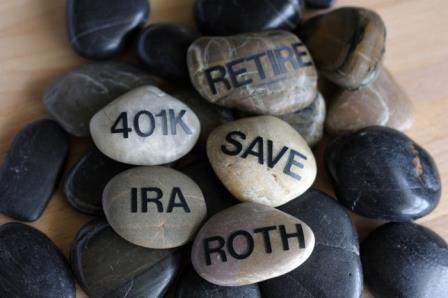 Saving for retirement’s no easy matter. There are many different retirement solutions these days, and sometimes it’s hard to tell which one is best for you.
Saving for retirement’s no easy matter. There are many different retirement solutions these days, and sometimes it’s hard to tell which one is best for you.
Finding What’s Best for You
While any retirement plan can be a sound investment for your future, it’s important to know exactly how they work. For instance, some retirement plans offer tax-free savings, while others offer bonuses like employer matching on contributions. Nothing’s free, but if you know exactly where your money is going, then you’ll be better able to evaluate your options.
In an effort to help protect your money and help you invest in a financially sound future, here’s a look at a few common retirement plans and what to keep in mind.
401(k)s
401(k) accounts are among the most popular retirement accounts. One of the best parts about having a 401(k) is the fact that many employers will actually match part of your contributions. However, 401(k)s are also very susceptible to various fees.
What’s worse, most of the fees are hidden. In a recent AARP survey, 71 percent of people with a 401(k) had no idea they were paying fees on their accounts. Scary, right?
One of the biggest lesser-known 401(k) fees is the expense ratio, which is used to help cover your account’s various operating expenses. Expense ratio fees average a little over one percent a year.
To break this down, one percent of $10,000 is $100. So that would mean you’re paying $100 a year for basically nothing. Now while $100 may not seem like a lot compared to $10,000, imagine paying that much—if not more—year after year. See, as your savings grow, so do your expense ratio fees.
For more information on hidden 401(k) fees, have a listen to this recent ear-opening (get it?) interview by NPR.
IRAs
An IRA, or Individual Retirement Account, allows you to save without taxing your savings. There are many different types of IRAs, but the three most popular are Traditional, Roth, and SEP. Each has their own set of eligibility restrictions.
One of the most common IRA fees is the establishment fee, which (luckily) is a one-time fee that can sometimes cost up to several hundred dollars. In addition, custodial fees are yearly fees (much like the expense ratio fees) that can vary anywhere between pocket change and a few hundred dollars.
IRAs are quickly becoming more popular than 401(k) accounts, yet they actually tend to come with heavier fees. The fees charged by IRAs are typically more vague, and they aren’t typically employer-managed liked 401(k) fees are. This means that you will typically pay for more of the account’s maintenance than with a 401(k).
How to Protect Your Investments
Fortunately, there are a couple of ways to manage how much these retirement solutions can take from your pocket.
For a 401(k), choosing a different portfolio mix or making other changes to the account can impact the fees being charged to you. Typically, though, there will be some trade-off involved. You have the option to change your 401(k) account from one provider to another, but this sometimes means losing various employer benefits.
If you have an IRA account, though, it would be wise to look at it thoroughly. Because they are not employer managed, the fees are typically higher — and you have more options because you can switch your IRA from one provider to another. Choosing a mass provider can also reduce the costs, as these providers typically aim for a high number of investors and reduce costs that way.
401(k) accounts and IRAs are both great ways to help you reach a comfortable retirement. At the same time, you don’t want to get rid of money problems now and then only have to confront them when you retire and realize you paid more in fees than you thought. Reviewing your accounts today will help you save for tomorrow.

